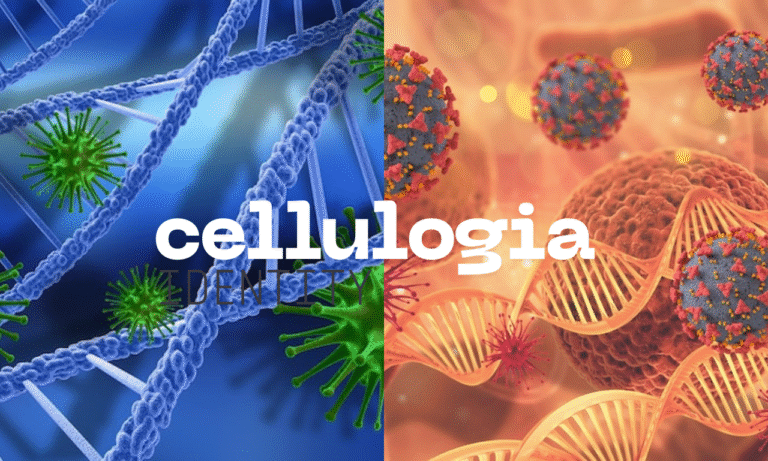I’ll never forget the first time I really noticed cellulite on my legs. I was getting ready for a beach day with friends, tugging on a pair of shorts, when the bathroom light hit just right. There they were—those little dimples I had heard so much about but never thought I’d see on myself. At first, I panicked (don’t we all?). I thought cellulite was something only “unhealthy” people got. Spoiler: I was wrong.
That moment led me down a rabbit hole of research, experiments, and self-care routines. Along the way, I stumbled upon the concept of cellulogia—a blend of knowledge, methods, and mindset around understanding cellulite and how to approach it without stress or shame.
This blog isn’t about miracle cures or impossible promises. Instead, I want to share what I’ve learned, what worked for me, and how cellulogia (a word I’ve come to love) helped me reframe my relationship with my body.
What Exactly Is Cellulogia?
In simple terms, cellulogia is all about the study, awareness, and treatment of cellulite. It’s not just about creams or fancy machines—it’s a mindset shift. Instead of hating those dimples, it’s about learning what causes them, how to manage them, and most importantly, how to accept yourself in the process.
Here’s the truth:
-
Around 80–90% of women (and even some men) develop cellulite at some point.
-
It’s linked to genetics, hormones, skin thickness, and lifestyle habits.
-
It’s not a reflection of your health or beauty.
When I realized cellulite was normal and common, I started looking at it differently. That’s what I think of when I say “cellulogia”—it’s an approach that mixes science with self-love.
Why Cellulogia Matters
Before I discovered this perspective, I wasted time chasing quick fixes. I tried a caffeine cream that smelled like burnt coffee, did hundreds of squats, and even considered those painful-looking rollers (ouch).
Cellulogia matters because:
-
It replaces shame with understanding.
-
It encourages sustainable habits rather than crash “fixes.”
-
It helps you see cellulite as one small part of your body, not a flaw that defines you.
My Personal Journey with Cellulogia
Let me be real—I didn’t wake up one day suddenly loving my cellulite. It took small steps.
Step 1: Educating Myself
I started by reading about how cellulite forms. Knowing it wasn’t “toxin buildup” (like some ads claim) but actually a mix of fat cells, connective tissue, and genetics made me stop blaming myself.
Step 2: Lifestyle Tweaks
I didn’t overhaul my life overnight, but I made gentle changes:
-
Drinking more water (I keep a fun reusable bottle with me now).
-
Adding strength training to my workouts, especially lunges and squats.
-
Eating more whole foods while still enjoying dessert (life’s too short to skip cake).
Step 3: Self-Care Practices
Dry brushing became my little ritual. I’ll be honest—it’s not magic, but it feels amazing and helps with circulation. Plus, it turned into a five-minute mindfulness practice each morning.
Over time, I noticed small changes. My skin looked a bit smoother, but more importantly, I stopped obsessing over every little dimple. That’s the real win.
Practical Cellulogia Tips You Can Try
If you’re curious about adopting a cellulogia mindset, here are a few things that genuinely helped me:
1. Move Your Body in Ways You Enjoy
Exercise is less about “burning fat” and more about keeping circulation strong. For me, dancing in my living room is just as effective (and way more fun) as hitting the gym.
2. Don’t Skip Hydration
This one sounds basic, but trust me—it matters. When I upped my water intake, my skin started looking plumper and healthier overall.
3. Focus on Protein and Fiber
I noticed that eating protein-rich meals kept me full longer and supported muscle tone, which naturally helped reduce the “cottage cheese” look.
4. Try Dry Brushing or Gentle Massage
Like I mentioned, it’s not a miracle, but it’s relaxing, helps with circulation, and leaves your skin feeling silky.
The Mental Side of Cellulogia
What surprised me most about this journey wasn’t the physical changes—it was the mental shift.
When I stopped fighting my cellulite, I actually felt lighter. I stopped comparing myself to Instagram models (hello, Facetune) and started appreciating what my body can do. Run, walk, hug, carry groceries—that’s worth celebrating.
What Didn’t Work for Me
Because I think honesty is important, here are two things I tried that weren’t worth it:
-
Expensive creams: They smelled nice but didn’t change much.
-
Overtraining: At one point, I thought exercising more would “fix” my legs. Instead, I ended up sore, cranky, and no smoother.
That’s why cellulogia makes sense—it’s not about punishing yourself. It’s about balance.
How You Can Start Your Own Cellulogia Journey
Here’s a simple roadmap you can try:
-
Educate yourself: Learn what cellulite really is.
-
Experiment: Try out hydration, nutrition tweaks, and gentle exercise.
-
Choose a self-care ritual: Massage, dry brushing, or even a skincare routine.
-
Shift your mindset: Remember, cellulite is normal.
Related Keywords to Keep in Mind
While diving into cellulogia, I found these concepts often come up:
-
Cellulite treatment
-
Skin health
-
Body positivity
-
Natural remedies
They’re all connected to the bigger picture of how we see and care for ourselves.
Conclusion: Embracing Cellulogia
At the end of the day, cellulogia is more than just a fancy word—it’s a reminder to understand, accept, and care for our bodies without judgment. My cellulite is still there, but it no longer defines how I feel about myself.
If you’ve been staring at your thighs in the mirror, frustrated and defeated, I hope this post gives you a gentler perspective. Start small, find what feels good, and remember—you’re not alone in this.

